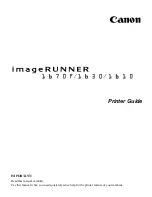
•
The longer a single scan takes, the longer the processing time will be. Try to keep scan
times as short as possible—under 5 minutes is best.
•
It is better to have one scan that captures all objects of interest than to have several scans.
Fewer scans means less registration.
•
Move the handset slowly and constantly, avoid jerky movements. Fast and jerky movements
may lead to inaccurate data or tracking may be lost.
•
Accuracy and tracking may be improved if you avoid excessive twisting movements while scanning:
Figure 6-1 Avoid twisting moments
•
Make sure that the objects of interest are within the specified maximum range and minimum range of
the handset.
•
Objects or surfaces may have an increased noise or reduced data if they are directly illuminated by
bright sunshine.
•
Use markers for high accuracy tasks
•
Avoid:
•
scanning your shadow while making outdoor scans
•
having only plain-colored surfaces (e.g., a white wall) in the handset’s field of view
•
having only shiny surfaces in the handset’s field of view, example metal rails, or high-gloss
lacquer
•
having only highly absorbing surfaces in the field of view, for example black furniture
•
scanning when the temperature is lower than 0 °C or higher than 40 °C
•
high concentrations of dust, fog, rain or snowfall. This may result in bad measurements. Avoid
scanning under these conditions.
•
Try to move the handset in circles or loops. This helps with loop-closing.
•
When scanning all sides of an object, start and stop at “less interesting” positions. For example,
when scanning a person, start and stop at the back.
•
Try to finish a scan at the place where you began. This helps with loop-closing.
•
Objects must not move while they are captured.
FARO Freestyle 2 User Manual
Chapter 6: Scanning with Freestyle 2
FARO Freestyle 2 (August 2020)
Page 30 of 58
















































